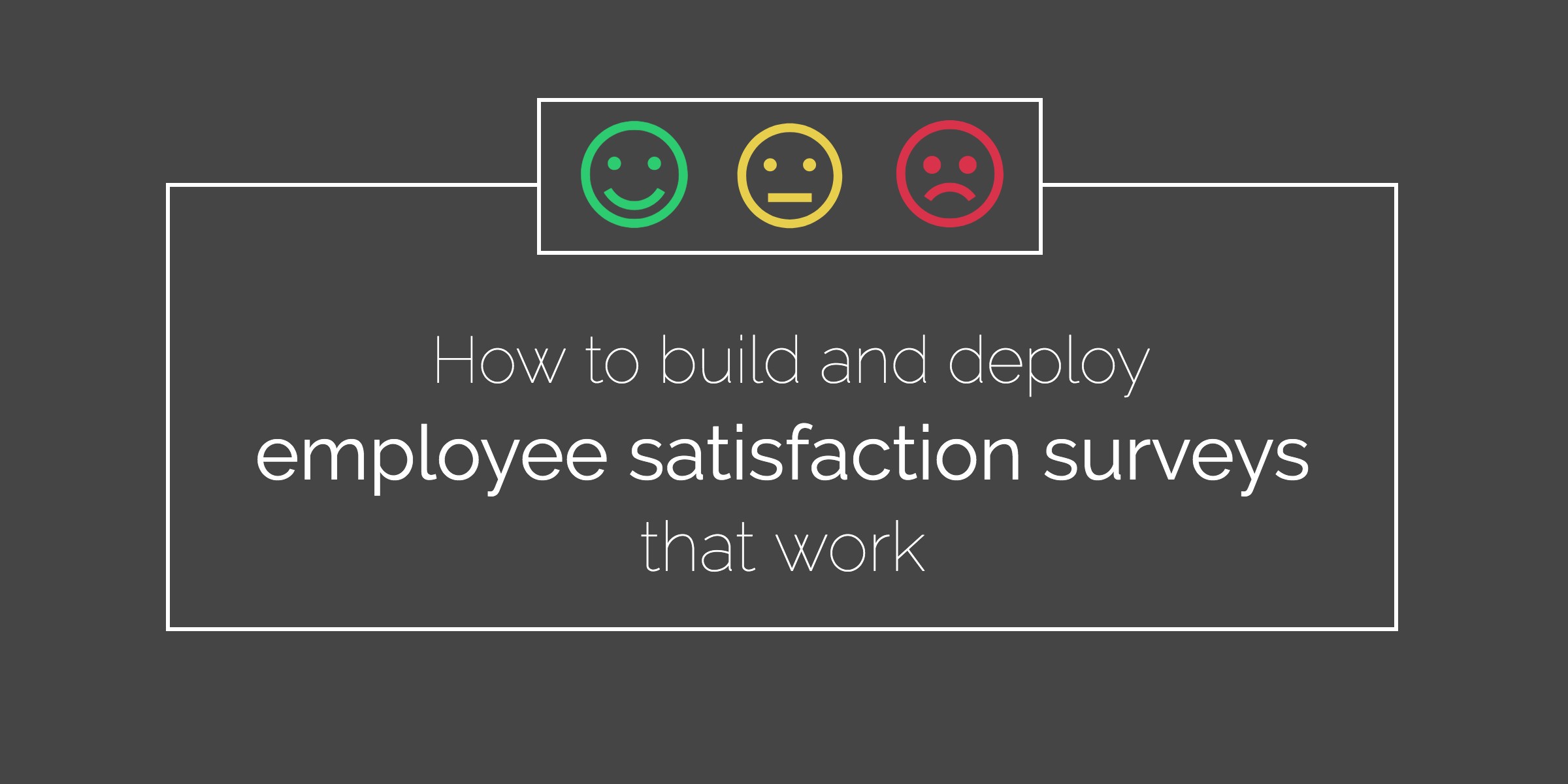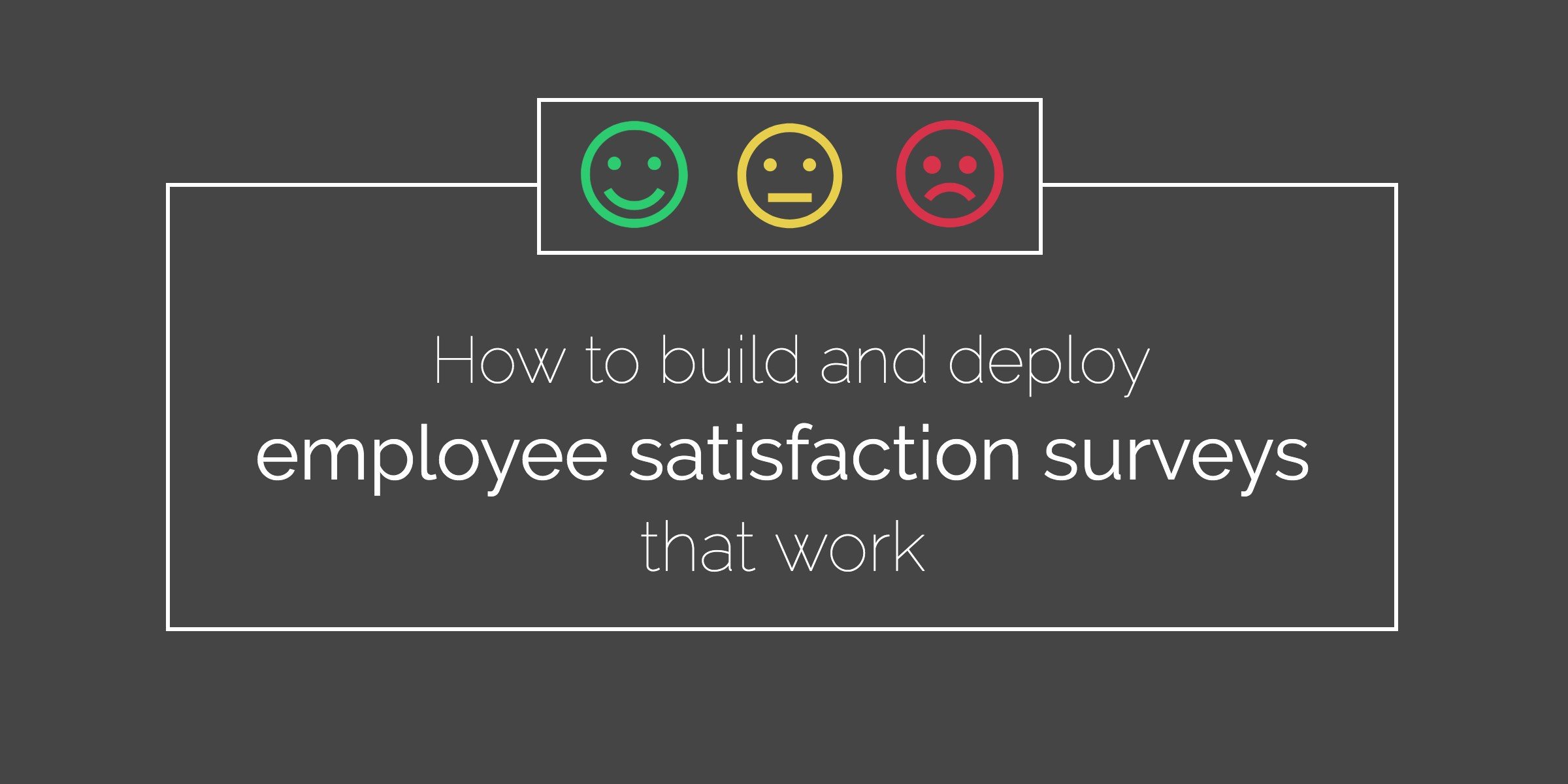
Losing your best employees is a bummer. It takes a lot of time and resources to find a replacement who has the necessary skills, and team productivity can take a massive hit during the time it takes to recruit, interview, onboard, and train a new employee. That’s why veteran HR managers know that keeping turnover low is key, and that employee retention efforts are some of the best investments a company can make.
If your company isn’t currently focusing on employee retention, it can be a challenge to know where to start. It’s not a great idea to throw money at the problem unless you’re sure that it's being spent on the right things. That’s why the best first step to improving retention is to get feedback using employee satisfaction surveys. The data these surveys return can help HR managers and company leaders make informed decisions about how to improve employee morale, company culture, engagement, and retention.
How to get started
Before you implement your employee satisfaction surveys, there are a few logistical questions you need to answer:
- How frequently are you planning to distribute these surveys?
- How will you distribute them? Will you use employee engagement software or will your HR team spearhead these efforts internally?
- Who do you want to take these surveys? Is this only for individual contributors, or are you including managers and other leadership?
- What do you hope to learn from these surveys?
- How can you make sure you’re getting honest responses from employees?
To get useful information from these surveys, it’s important that you have a plan before you get started, and that your company’s leaders are committed to help you make decisions based on the data you collect.
What to ask
The right questions to ask will vary depending on your goals. Through observation and casual conversations, you probably have an idea of what concerns are prevalent in your workplace; use those as a starting point to help you choose which questions to include in an employee satisfaction survey.
To help you get started, though, here are a few examples of questions you may want to include:
- Do you enjoy our company’s culture?
- Do you find meaning in your work?
- Do you feel that you have adequate opportunities for career development?
- Do you feel that our company offers enough opportunities for promotion?
- Do you feel your contributions are valued?
- Do you have access to the training, technology, and tools you need to do your job well?
- Do your managers communicate with you effectively?
- Do you feel that your responsibilities are clearly defined?
- Do you feel that workloads are distributed fairly across your team?
- Do you feel connected to your coworkers?
- Does your team inspire you to do your best work?
- Do you feel that your skills are being used effectively in your role?
- Do your managers seem invested in your success?
- Do your managers seem invested in the success of your team as a whole?
- Does your manager value and act on your feedback?
- Do you feel our organization is open to change?
- Are you happy at work?
- On a scale of 1-10, how would you rate your current work-life balance?
- On a scale of 1-10, how likely are you to recommend our company as a good place to work?
- Hypothetically, if you were to quit tomorrow, what would your reason be?
How to get the most useful information
While you may be tempted to ask every one of the questions above (and then some), you likely wouldn’t get very honest or useful feedback from such a long survey. These surveys should serve as a quick snapshot of how employees really feel about their work; if they’re too time-consuming, many people will opt out, and some will give poorly-considered answers to get to the end faster. Keep your surveys short (about 5-10 questions) to maximize your chances of getting employees to share their true feelings about the workplace.
Another crucial way to increase the odds of honest feedback is to make your employee satisfaction surveys totally anonymous, and to make sure your employees know that their responses aren’t tied to them. When you’re looking for actionable data to help make improvements in company culture, honesty is key. If there’s any worry that negative feedback will be met with reprisal or retaliation, employees will sugarcoat their true feelings.
Additionally, this data is most useful if it’s collected at regular intervals. You’ll want to pinpoint trends in employee satisfaction that you can tie to your efforts, so aim to distribute surveys at least quarterly, if not monthly.
Lastly, when you’re writing employee satisfaction surveys, make sure you avoid corporate jargon. Since you’re trying to take the emotional temperature of the workplace, use plain emotional language that appeals to your employees as humans.
If you’re hoping to improve retention metrics in 2020, the best place to start is to get honest and useful feedback so you have a baseline understanding of what matters to your company’s employees.
